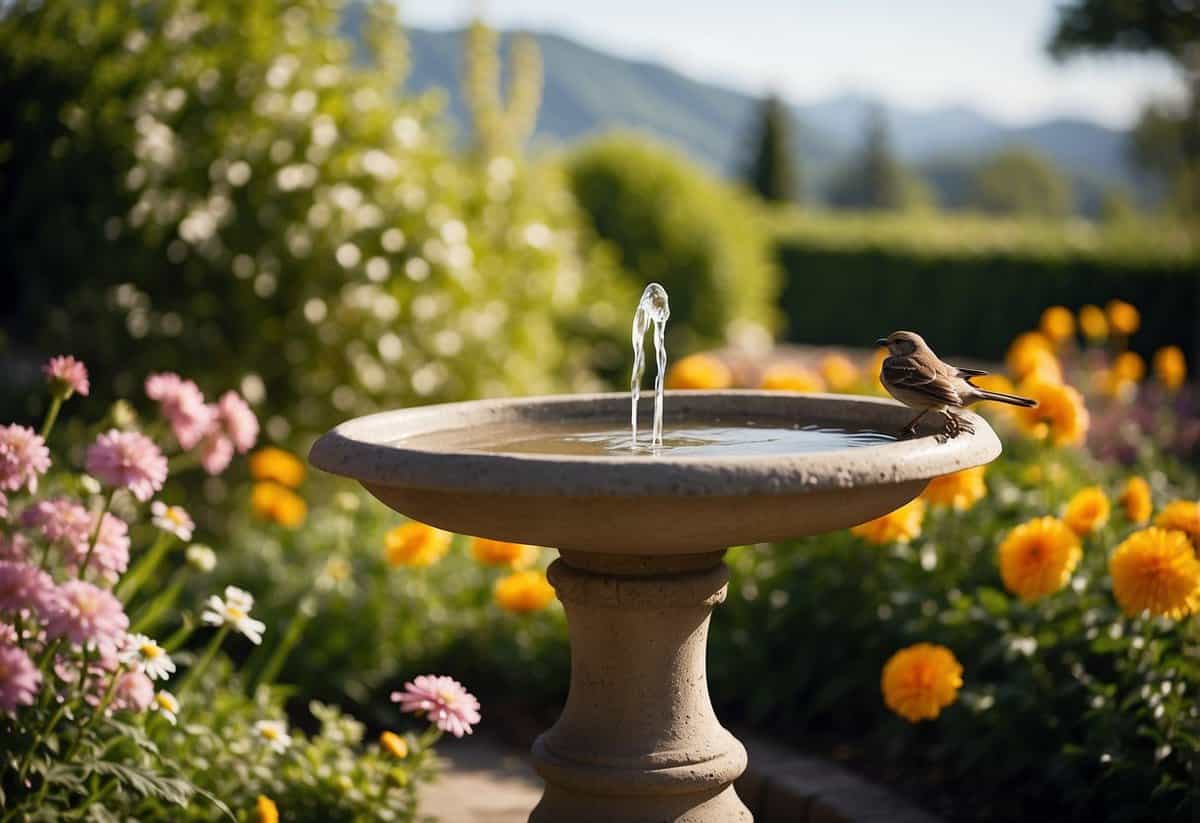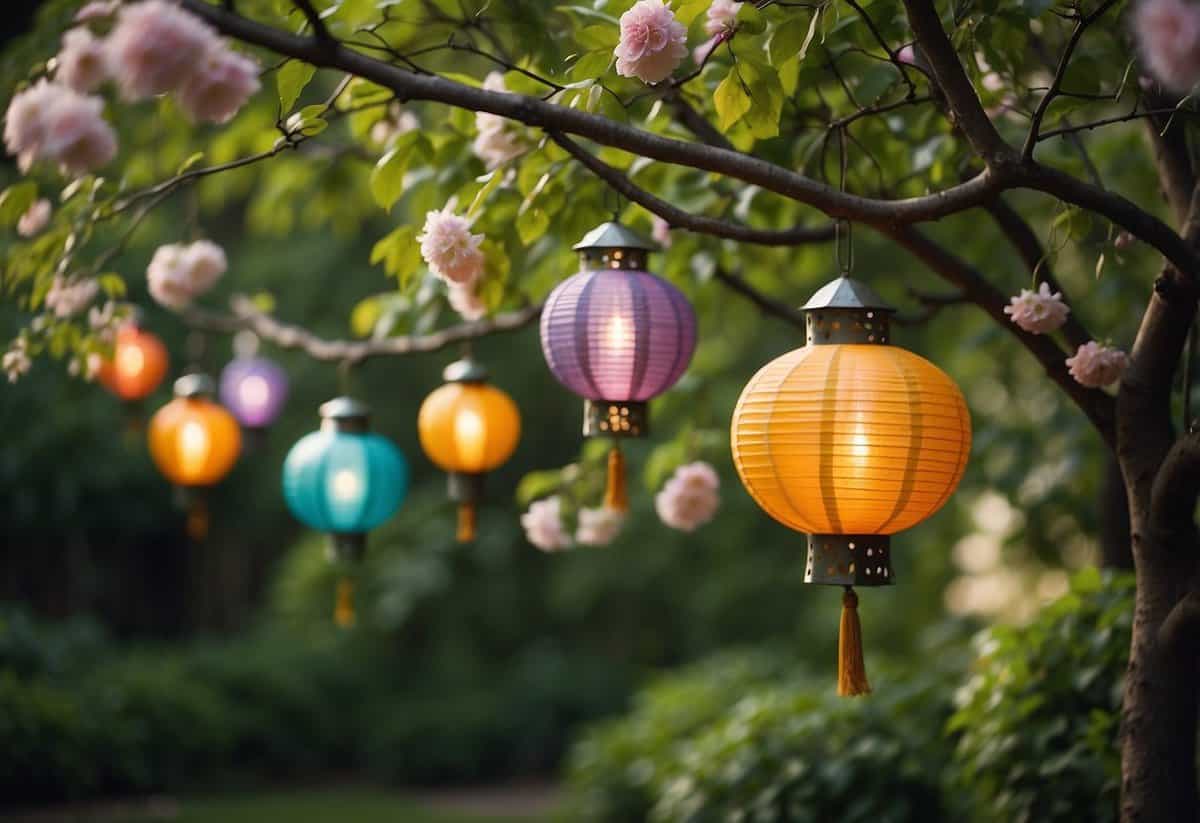Garden Ideas for Spring: Blossoming Tips to Revamp Your Outdoors
Spring is the perfect time to refresh your garden and enjoy the outdoors. As the weather gets warmer, you’ll find countless opportunities to add color, texture, and life to your garden space. Whether you’re a seasoned gardener or just starting, there’s always something new to try.

What are the best ways to make your garden bloom this spring? This article will explore various ideas and tips to help you create a beautiful and thriving garden. From simple tasks to creative projects, you’ll get inspired to make your garden the best it can be this season.
1) Plant colorful tulips

Tulips are a great choice for adding color to your garden. They come in many shades, from bright reds to soft pastels.
You can plant tulip bulbs in the fall for spring blooms. Make sure to plant them in an area that gets plenty of sunlight.
For a longer blooming season, plant a mix of early, mid, and late-season tulips. This way, you can enjoy their beauty throughout the spring.
Space the bulbs a few inches apart. This gives each plant room to grow and showcases their lovely colors.
Water the bulbs well after planting. This helps them establish roots before winter.
2) Create a Butterfly Garden

Plant flowers in a sunny area. Butterflies love the warmth and will visit more often when your garden has plenty of sunlight. You can use rocks or pavement to add extra heat.
Choose a mix of annuals and perennials. This ensures continuous blooming through the seasons. Use containers and hanging baskets to create layers of color.
Try grouping the same plants together in drifts of 3-5. Large swaths of color will attract more butterflies. Going organic and avoiding pesticides helps too. For more tips, check this guide to creating a butterfly garden in your backyard.
3) Install a Birdbath

Adding a birdbath to your garden is a great idea. Birds love having a place to drink and bathe. It can also attract butterflies and bees when you add a few stones for them to land on.
You can find ready-made options, such as the stone bird bath that blends into any garden. For the DIY enthusiast, consider a solid wood bird bath that showcases your woodworking skills.
4) Grow your own herbs

Growing your own herbs is a fun and easy way to add fresh flavors to your meals. Many herbs, like basil, rosemary, and mint, can be grown in small spaces, even on your windowsill.
Use colorful pots to make your herb garden look attractive. Place them in a spot with plenty of sunlight for the best results.
You can even repurpose items like old wine boxes or wooden crates as planters for a unique touch. Consider checking out some creative herb garden ideas for inspiration.
5) Set up a cozy seating area

Creating a cozy seating area in your garden can transform the space into a relaxing retreat.
Consider using foldable chairs and collapsible tables to save space when they’re not in use. Add soft cushions and vibrant pillows to make the area more comfortable and inviting.
You can also include a light wood hanging tree swing for a charming touch. Surround the seating area with potted plants and hanging baskets to enhance the natural beauty.
6) Build a DIY Fairy Garden

Creating a fairy garden is a fun project that adds magic to your space. You can start with a small container or a corner in your garden.
Add tiny houses, pebble pathways, and miniature furniture. Choose colorful plants like succulents, moss, and small flowers.
For more ideas, check sites like Happiness is Homemade and Family Handyman. These can guide you in making a charming fairy garden.
7) Add a water feature

A water feature can transform your garden into a serene oasis. Consider installing a raised pond to create a focal point in your space.
Another idea is to add a modern garden pool with a monochromatic color scheme.
Even a small stand-alone pond can make a big impact and is easy to set up with ready-to-assemble kits. Add water plants to enhance its natural beauty.
8) Hang Decorative Lanterns

Hanging decorative lanterns is a great way to add charm to your garden. You can use different styles and colors to match your taste.
Try using lanterns made from burlap for a rustic feel. Add an LED tealight for a soft glow.
Solar lanterns are another eco-friendly option. DIY solar lights made from glass jars and solar light kits are easy to create and maintain.
9) Create a Succulent Wall

A succulent wall is a great way to add a unique feature to your garden. Start with a wooden frame or buy one ready-made. Fill it with soil and secure it using chicken wire.
Next, arrange your succulents. You can mix colors or create patterns. Once done, water the plants gently through the wire. Enjoy your living wall!
10) Try Vertical Gardening

Vertical gardening is a great way to use small spaces. You can create a stunning vertical garden by adding planters to your wall or fence. This not only looks beautiful but also gives you more space for your plants.
Another idea is to make a Strawberry Tower Garden. This simple project can brighten an empty corner on your patio. It’s perfect for growing trailing plants.
A unique option is a chicken wire fence planter. Attach it to a wall or fence, or let it stand alone. This can add a trendy look to your garden space.
Getting Started with Spring Gardening

Spring gardening is a great way to enjoy the outdoors and make your space beautiful. You’ll need to prepare your soil and choose the right plants to ensure a successful growing season.
Preparing Your Soil
Healthy soil is the foundation of a great garden. Start by removing any weeds and debris from your planting area. Weeds can compete with your plants for nutrients and water, so it’s essential to get rid of them.
Next, loosen the soil using a garden fork or tiller. This helps improve drainage and allows roots to grow more easily. Adding compost or well-rotted manure can enrich the soil with nutrients. Spread about 2-3 inches of compost over your soil, then mix it in thoroughly.
Test your soil’s pH levels with a home test kit. Most plants prefer a pH between 6 and 7. If your soil is too acidic, you can add lime to raise the pH. If it’s too alkaline, use sulfur to lower it. Make sure to follow the instructions on the product you use.
Selecting Appropriate Plants
To get the best results, you must choose plants suited to your climate and soil type. Identify your growing zone to know which plants will thrive in your area. You can find this information on various gardening websites or local gardening centers.
Consider planting a mix of flowers, vegetables, and shrubs. Early spring flowers like tulips and daffodils can add splashes of color to your garden. Hardy vegetables such as peas, spinach, and carrots are great choices for cooler temperatures.
Look for disease-resistant varieties when selecting seeds and plants. They require less maintenance and have a better chance of producing healthy crops. Always read the plant tags or seed packets for specific care instructions to ensure they receive the right amount of sunlight, water, and nutrients.
Choosing the right plants and preparing your soil properly will give you a head start on creating a beautiful and productive spring garden.
Designing Your Spring Garden

Spring is a great time to refresh your garden with vibrant colors and unique decorations. Focus on creating colorful flower beds and incorporating interesting garden art to make your space stand out.
Creating Colorful Flower Beds
Choosing the right flowers is key to a beautiful flower bed. Opt for a mix of early bloomers like tulips and daffodils, along with later blooming flowers like daisies and marigolds.
Color Schemes:
- Monochromatic: Stick to one color for a cohesive look
- Complementary: Use colors opposite each other on the color wheel (e.g., purple and yellow)
Flower Placement:
- Taller flowers (like foxgloves) at the back
- Medium flowers (like peonies) in the middle
- Shorter flowers (like pansies) at the front
Regularly water your flower beds and remove weeds to keep them healthy. Also, consider adding mulch to retain moisture and suppress weeds. For more inspiration on flower bed designs, check out these spring gardening ideas.
Incorporating Garden Art
Adding garden art can enhance the beauty of your garden. Consider sculptures, birdbaths, or even vintage planters for a touch of personality.
Types of Garden Art:
- Sculptures: Stone or metal pieces can serve as focal points.
- Birdbaths: Not only decorative but also useful for attracting birds.
- Planters: Vintage or colorful pots add charm and can be moved around as needed.
Placement Tips:
- Place art where it can be easily seen and appreciated.
- Use art to create a theme, such as a whimsical or classical look.
- Don’t overcrowd; allow each piece to stand out.
Incorporating garden art can make your space more enjoyable and give it a unique character. For some creative ideas, visit this guide on spring garden design.







